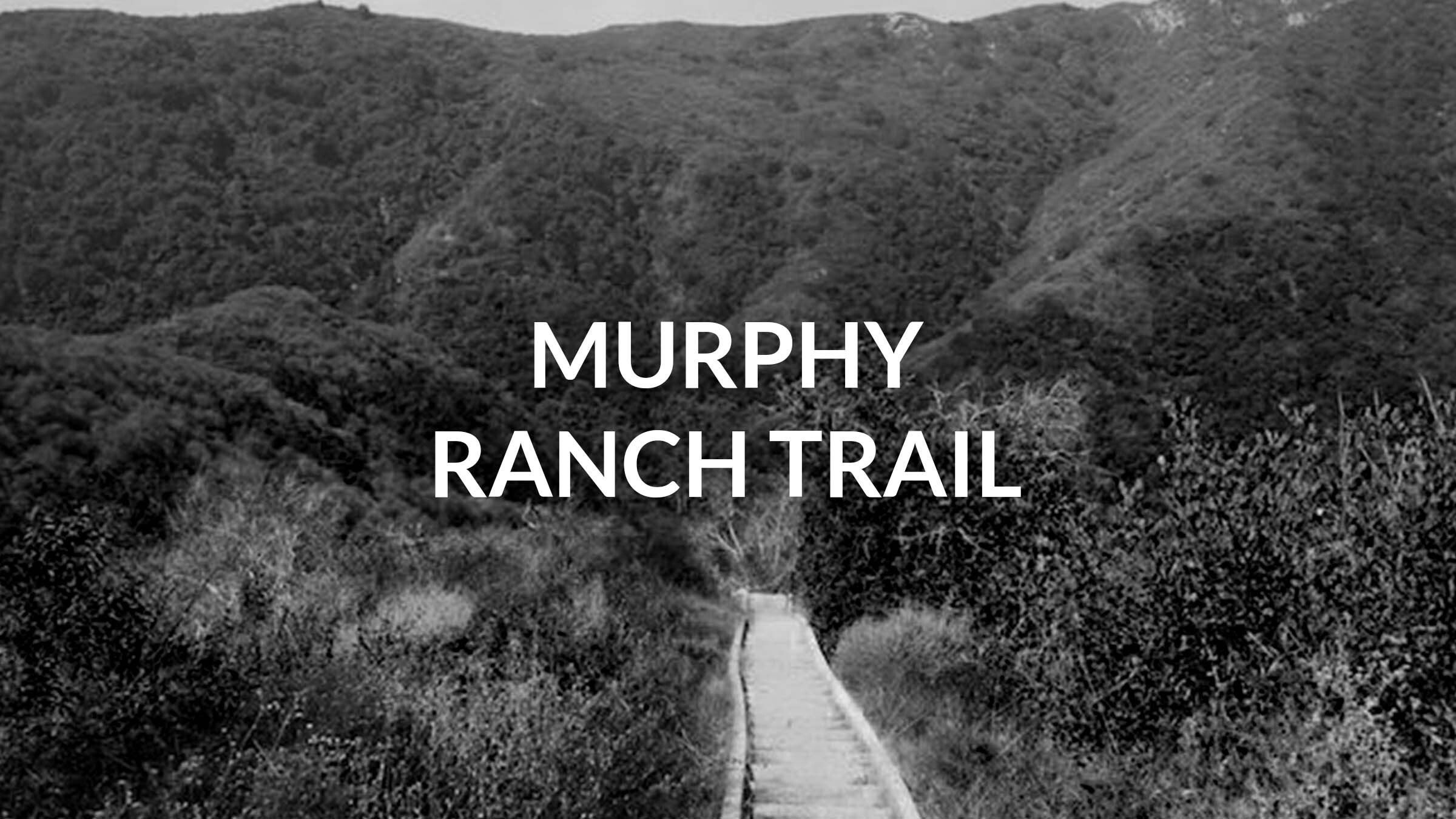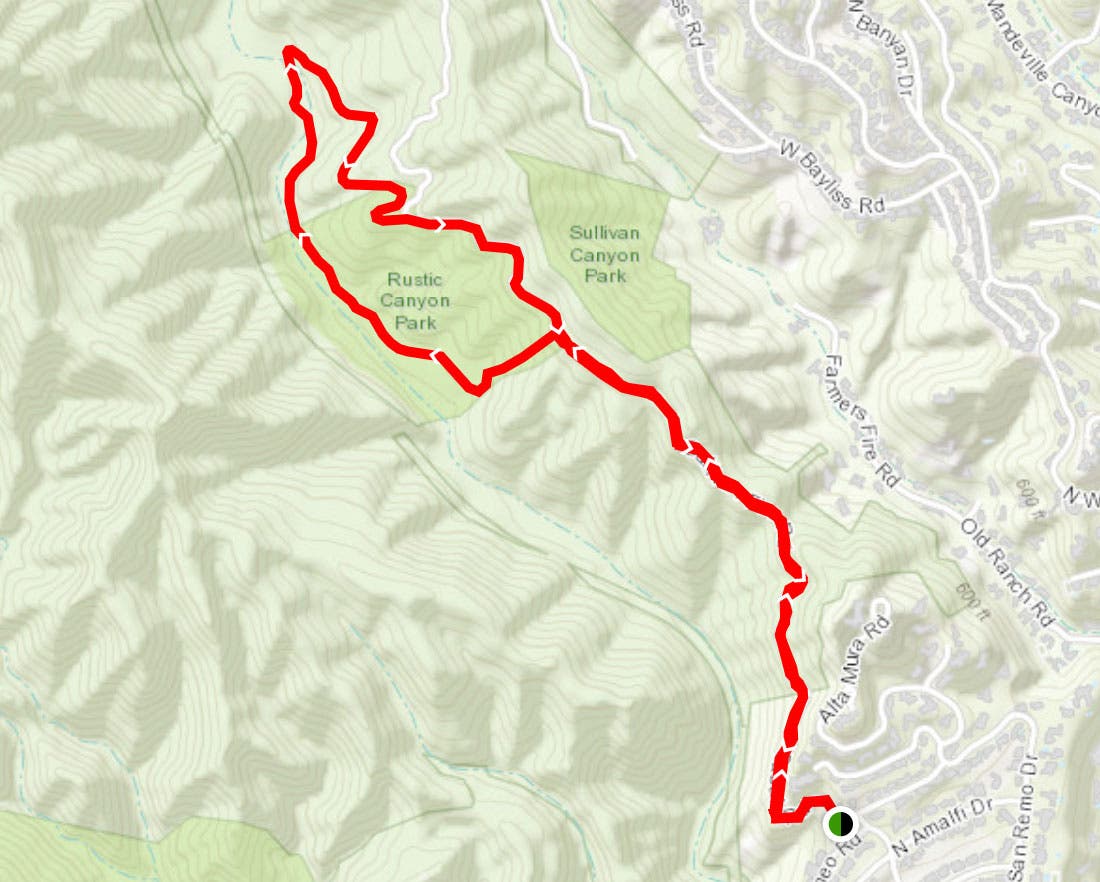Tales from the Trail: Murphy Ranch Trail - Nazi Valley

Do you believe in ghosts? 45% of Americans say they do… and 18% confess they’ve seen one. Some have experienced these encounters at our National Parks and on our trails. All October long, PodiumRunner is sharing Tales from the Trail. Read Triathlete senior editor Chris Foster’s contribution below and check out the complete collection here.
Location: Pacific Palisades, Los Angeles, CA
Trail: Murphy’s Ranch, aka “The Scares”, aka “The Nazi Camp”, aka “Camp Josepho”
This tall trail tale has it all: Nazi sympathizers, shady German mystics, a utopia gone (way) wrong, and even famous movie cowboy Will Rogers with a cameo. The best part? A story that sounds like the setup for an Indiana Jones reboot ironically takes place right in Hollywoodland’s own backyard.
But like any good Hollywood movie, let’s first set the scene with a wide, establishing aerial shot.
Beautifully wooded Rustic Canyon sits tucked away in the Santa Monica Mountains, with Temescal Canyon to its southwest and popular hiking/biking destination Sullivan Canyon to its northeast. Rustic Canyon’s mouth empties out into the lavishly expensive Pacific Palisades neighborhood of Los Angeles’ elite Westside—where you’ll find movie execs and other entertainment industry bigwigs perched atop monolithic real estate that routinely sells for millions.
But as a crow would so ominously fly upward towards Rustic Canyon’s middle, the camera pulls away from Will Rogers State Park’s exquisite polo fields at the canyon’s terminus and pans north to the darkened, foreboding trees of Murphy’s Ranch.
It’s at this spooky spot, roughly halfway up the canyon, where that same aforementioned cowboy movie star sold a 55-acre parcel of land to “Jessie M. Murphy, widow” in August of 1933, according to the Crescent Bay Historical Project. It turned out Mrs. Murphy never existed (though the name of the ranch stuck)—the real owners were a wealthy couple named Norman and Winona Stephens. From here, the plot thickens and history’s lens becomes sepia tinted by legend.
It’s unknown how the Stephens’ accumulated their wealth, but we do know how they spent it: Under the guidance of a mysterious German named Herr Schmidt who claimed supernatural powers—the story goes—the Nazi-sympathizing couple began construction on a $4M stronghold (approximately $66M today) in that middle section of Rustic Canyon. The sprawling estate included a diesel power plant, a 375,000-gallon concrete water tank, a giant meat locker, 22 bedrooms, and a bomb shelter, according to a Daily Mail story about the ranch.
The legend goes that the Stephens’ believed Nazi Germany would win the war, and the couple—along with a cadre of like-minded American sympathizers known as the Silver Shirts—would emerge from the rubble of a defeated U.S. government and rule the land as their own.
“This was supposed to be the seat of American fascism from where Hitler would one day run the United States,” Historian Randy Young told the Sunday Express. “The neighbours were a little freaked out by the construction and weird happenings, but until war broke out, they thought they were just eccentric people.”
Not-so-sadly, the plan fell apart before it could even begin, and the day after the bombing of Pearl Harbor, on December 8, 1941 authorities raided the ranch, taking into custody around 50 members of the group, according to the same Daily Mail story.
In another Hollywood twist, the Boy Scouts of America had previously been gifted a camp just above Murphy’s Ranch in Rustic Canyon years before the raid. Today the camp is somewhat ironically named Camp Josepho after the land’s previous property owner—Anatol Josepho, a Russian-American Jewish immigrant who is credited with inventing the first automated photo booth in 1925.
The Boy Scout camp still exists, while Murphy’s Ranch became greatly dilapidated—but otherwise accessible to the public—since the raid. For decades, many of the major structures that were meant to withstand bombs stood tall as live oaks, eucalyptus trees, and heavy undergrowth slowly took back that section of the canyon, while visitors’ (trespassers?) feet cut paths through the site. Even less than ten years ago, many of the buildings still stood, including the generator room, the stables, a barn, a concrete garden, and over 500 stairsteps leading from the road above to the graffiti-strewn structures on the canyon floor below.
In recent years, Murphy’s Ranch has succumbed to something almost as frightening as an ill-fated Nazi enclave: the Instagram effect. What was once a spooky trail full of abandoned-but-explorable graffiti’d buildings has slowly been “snapped” away into a place that’s had to have been painted, repainted, and mostly fenced off, due to the influx of the public. While you can still run or hike the roughly 4-mile Murphy’s Ranch trail, it’s crowded and difficult (and probably illegal) to explore any of the few remaining structures that haven’t been systematically demolished in the last few years.
The final scene to this epic Hollywood tale ends as bizarrely as it began, with a shot of a group of teens vamping for likes on top of a former Nazi dream/nightmare. A sign for a Boy Scout camp stands nearby as the final marker for a place that was meant to be the beginning of an alternate dystopian America…and the credits roll.
